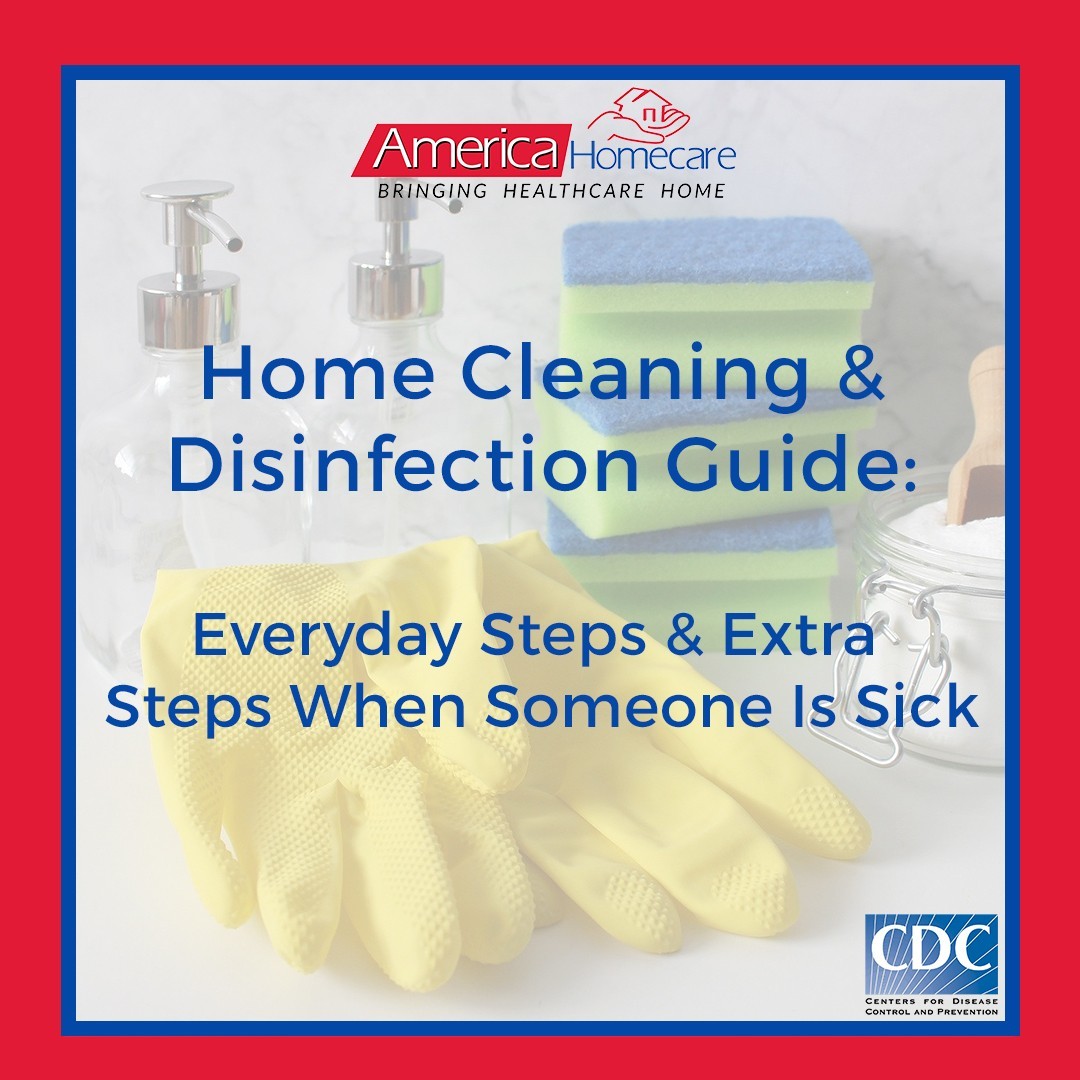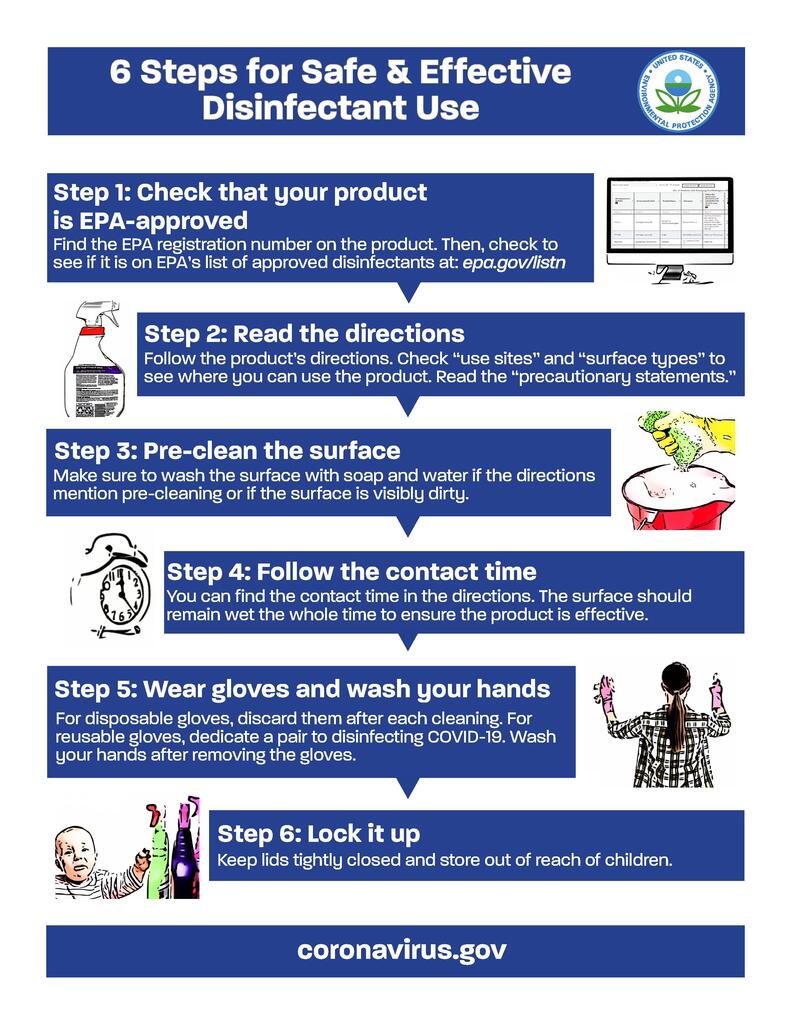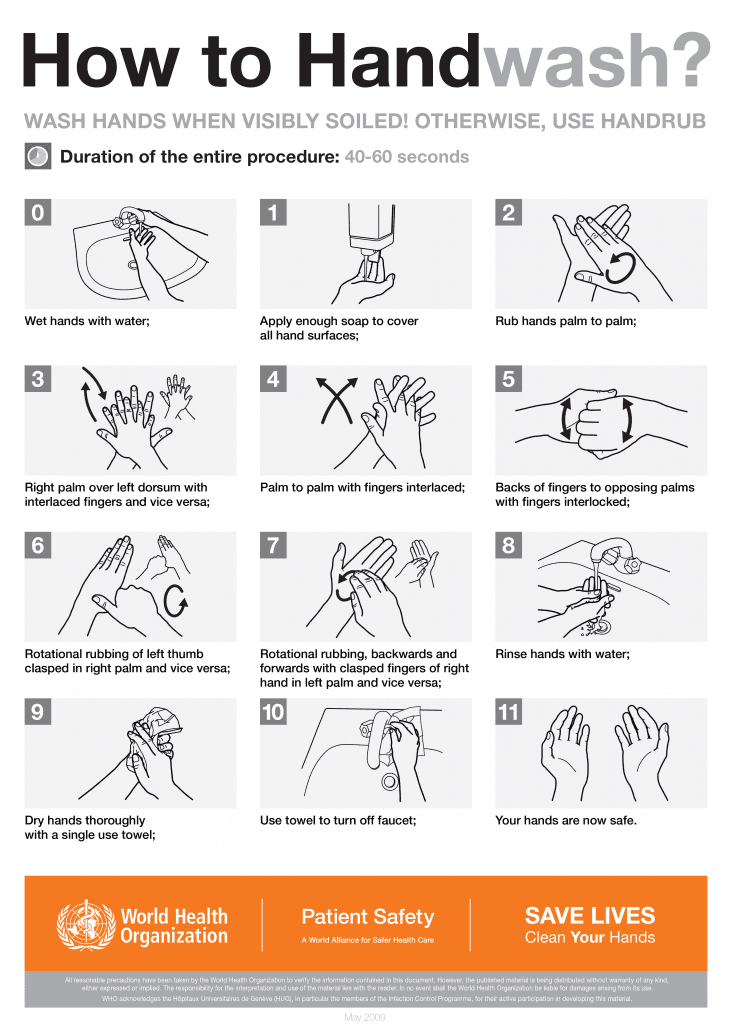Home Cleaning and Disinfection Guide

Home Cleaning and Disinfection Guide | America Homecare
We had briefly covered a caregiver housecleaning guide in a previous post. In this post, we’re going to cover a cleaning and disinfection guide if you’ve got someone sick in your household.
There’s also handy cleaning checklist on our blog you can use as a reference for shopping.

PLEASE NOTE: In the state of New York, you are required to wear a face mask when in public.
Coronavirus or COVID-19 is a newly discovered virus. Experts constantly learn more and more about it. At the moment, there is no vaccine. Taking proper steps to protect yourself and others can lower the spread significantly. This is not a complete list of symptoms and the CDC will add more as time goes on.
How to Clean and Disinfect
Clean
- Wear reusable or disposable gloves for routine cleaning and disinfection.
- Clean surfaces using soap and water, then use disinfectant.
- Cleaning with soap and water reduces number of germs, dirt and impurities on the surface. Disinfecting kills germs on surfaces.
- Practice routine cleaning of frequently touched surfaces. High touch surfaces include: tables, doorknobs, light switches, countertops, handles, desks, phones, keyboards, toilets, faucets, sinks, etc.
Disinfect
- The CDC recommends use of EPA-registered household disinfectant.
Follow the instructions on the label to ensure safe and effective use of the product. Read EPA’s infographic on how to use these disinfectant products safely and effectively.
Many products recommend:- Keeping surface wet for a period of time (see product label)
- Precautions such as wearing gloves and making sure you have good ventilation during use of the product
Always read and follow the directions on the label to ensure safe and effective use.
- Wear skin protection and consider eye protection for potential splash hazards
- Ensure adequate ventilation
- Use no more than the amount recommended on the label
- Use water at room temperature for dilution (unless stated otherwise on the label)
- Avoid mixing chemical products
- Label diluted cleaning solutions
- Store and use chemicals out of the reach of children and pets
You should never eat, drink, breathe or inject these products into your body or apply directly to your skin as they can cause serious harm. Do not wipe or bathe pets with these products or any other products that are not approved for animal use.
- Diluted household bleach solutions may also be used if appropriate for the surface.
- Check the label to see if your bleach is intended for disinfection and has a sodium hypochlorite concentration of 5%–6%. Ensure the product is not past its expiration date. Some bleaches, such as those designed for safe use on colored clothing or for whitening, may not be suitable for disinfection.
- Unexpired household bleach will be effective against coronaviruses when properly diluted.
Follow manufacturer’s instructions for application and proper ventilation. Never mix household bleach with ammonia or any other cleanser. Leave solution on the surface for at least 1 minute.
- To make a bleach solution, mix:
- 5 tablespoons (1/3rd cup) bleach per gallon of room temperature water
OR
- 4 teaspoons bleach per quart of room temperature water
- Bleach solutions will be effective for disinfection up to 24 hours.
- Alcohol solutions with at least 70% alcohol may also be used.
Soft surfaces
For soft surfaces such as carpeted floor, rugs, and drapes.
- Clean the surface using soap and water or with cleaners appropriate for use on these surfaces.
-
Launder items (if possible) according to the manufacturer’s instructions. Use the warmest appropriate water setting and dry items completely.
OR
- Disinfect with an EPA-registered household disinfectant. These disinfectants meet EPA’s criteria for use against COVID-19.
- Vacuum as usual.
Electronics
For electronics, such as tablets, touch screens, keyboards, and remote controls.
- Consider putting a wipeable cover on electronics.
- Follow manufacturer’s instruction for cleaning and disinfecting.
- If no guidance, use alcohol-based wipes or sprays containing at least 70% alcohol. Dry surface thoroughly.
Laundry
For clothing, towels, linens and other items.
- Launder items according to the manufacturer’s instructions. Use the warmest appropriate water setting and dry items completely.
- Wear disposable gloves when handling dirty laundry from a person who is sick.
- Dirty laundry from a person who is sick can be washed with other people’s items.
- Do not shake dirty laundry.
- Clean and disinfect clothes hampers according to guidance above for surfaces.
- Remove gloves, and wash hands right away.
Clean Hands Often
- Clean your hands after these actions.
- Removing gloves and after contact with a person who is sick.
- Blowing one’s nose, coughing, or sneezing.
- Using the restroom.
- Contact with animals or pets.
- Clean your hands before eating or preparing food.
- Also, clean your hands before and after providing routine care for another person who needs assistance (e.g. a child).
- Wash your hands often with soap and water for 20 seconds.
- Hand sanitizer: If soap and water are not readily available and hands are not visibly dirty, use a hand sanitizer that contains at least 60% alcohol. However, if hands are visibly dirty, always wash hands with soap and water.
Always read and follow the directions on the label to ensure safe and effective use.
- Keep hand sanitizers away from fire or flame.
- For children under six years of age, hand sanitizer should be used with adult supervision.
- Always store hand sanitizer out of reach of children and pets.
- Avoid touching your eyes, nose, and mouth with unwashed hands.
When Someone Is Sick
Bedroom and bathroom
Keep separate bedroom and bathroom for a person who is sick (if possible).
- The person who is sick should stay separated from other people in the home (as much as possible).
- If you have a separate bedroom and bathroom: Wear disposable gloves and only clean the area around the person who is sick when needed, such as when the area is soiled. This will help limit your contact with the person who is sick.
- Caregivers can provide personal cleaning supplies to the person who is sick (if appropriate). Supplies include tissues, paper towels, cleaners, and EPA-registered disinfectants. If they feel up to it, the person who is sick can clean their own space.
- If shared bathroom: The person who is sick should clean and disinfect after each use. If this is not possible, the caregiver should wait as long as possible before cleaning and disinfecting.
See precautions for household members and caregivers for more information.
Food
- Stay separated: The person who is sick should eat (or be fed) in their room if possible.
- Wash dishes and utensils using disposable gloves and hot water: Handle any used dishes, cups/glasses, or silverware with gloves. Wash them with soap and hot water or in a dishwasher.
- Clean hands after taking off gloves or handling used items.
Trash
- Dedicated, lined trash can: If possible, dedicate a lined trash can for the person who is sick.
- Use disposable gloves when removing garbage bags, and handling and disposing of trash. Wash hands afterwards.
Resource links:
https://www.cdc.gov/coronavirus/2019-ncov/daily-life-coping/essential-goods-services.html
https://www.cdc.gov/coronavirus/2019-ncov/faq.html#Cleaning-and-Disinfection
To see previous posts we’ve covered with some helpful tips and information on the coronavirus (COVID-19), be sure to visit our category page or you can view this post with all the infographics for easy printing or reviewing.

Get care from someone you trust
Do you want to receive care from your
loved one while they are compensated
by Medicaid?

